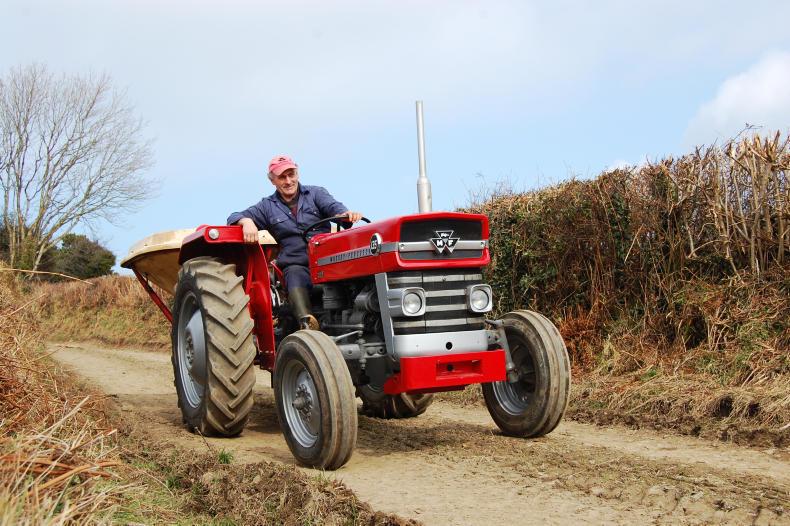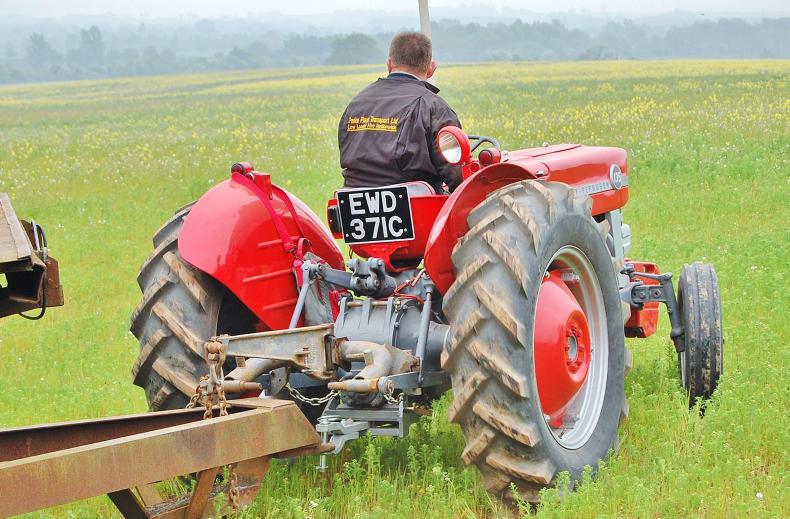Anyone who’s been involved in farming during the past 50 years, will have either seen or driven a Massey Ferguson (MF) 135. It was the most popular tractor of its genre, providing a combination of performance and versatility which appealed universally to farmers around the globe.
The Red Giants

The MF 135 (pictured above) made its UK debut in December 1964. It was the smallest Coventry-built model in the new Massey Ferguson DX (100 Series) lineup, which MF marketed as The Red Giants. The new models also included the 30hp French-built MF 130, the mid-sized Coventry-built 58hp MF 165 and the range-topping 72hp MF 175.
During a production run which lasted 14 years, more than 340,000 MF 135s were manufactured, with production peaking in 1967, when a total of 43,240 were built. It seems unbelievable today, but sales of the MF 135 in 1967 accounted for 22% of the UK tractor market, and 56% of the global market in the 43hp-52hp market sector.
Mechanically, the MF 135 was based on its predecessor the MF 35X, retaining a slightly revised version of the excellent Ferguson hydraulic system – for which the brand had become famous. Power to the wheels was directed by the same six-speed/two-range gearbox, or MF’s optional 12-speed multi-power transmission.
Tucked under the tractor’s bright-red hood was a Perkins AD3.152 engine, an improved direct-injection version of the three-cylinder Perkins unit found in the 35X, now rated at 45.5hp. This would later be increased to 47hp, providing the MF 135 with a power-to-weight ratio of around 27hp/t, a figure which remains impressive even by today’s standards.
New features
Like its stablemates, the MF 135 featured a distinctive new look, which had been developed for the DX 100 and 1000-Series tractors by a team of engineers and draughtsman in Detroit, Michigan. The new range also introduced a host of new features, designed to improve both operator comfort and tractor performance.
For the MF 135, this included a new steering console with a full range of gauges. It also included a choice of clam-shell fenders, or, a new flat-top fender design with integrated aluminium grab-handles. There was even the option of a foot throttle.
A brand new feature on the MF 135, was Massey-Ferguson’s hydraulic Pressure-Control. This brilliant but woefully underrated rear-linkage weight-transfer system used a special linkage-mounted coupling to enable the tractor to comfortably pull large trailed implements and turntable trailers.

Pressure Control used a linkage-mounted coupling to enable the tractor to pull large trailed implements and turn-table trailers. This early-production 1965 model, features red wheel-centres and clam-shell fenders.
Power steering became an option in 1969, following the change from a swept front axle to a straight beam-axle. In September 1970, following the introduction of UK safety cab regulations, the MF 135 was offered with several cab options, including the popular two-door Scirrocco flexi-cab.
The Scirrocco design featured a safety frame fitted with removable panels and cladding, which could be stripped down to a windscreen and bare frame in less than five minutes. The flexi-cab, also had the benefit of being quieter than optional steel-clad alternatives, produced by the likes of Duncan and Sekura.
Production of the MF 100-Series for the domestic market ceased in 1976, when the full-line of new MF 500-Series Q-cab tractors was launched.

Following the introduction of UK safety cab regulations in 1970, the MF 135 was offered with several cab options.
Although the new range offered the MF 550 as an alternative, the popularity of the 135 prompted MF to extend its tenure, with the introduction of the QD (quick-detach) model, equipped with a removable Q-cab built by Cabcraft.
The MF 135 was finally replaced by the MF 230 /240 models, which were introduced in 1979.
Its legacy survives today, in the form of the latest Massey Ferguson 4700 Global-Series tractors.
Plenty of bidders and a complete clearance at Kildare vintage auction